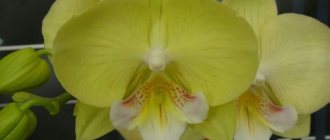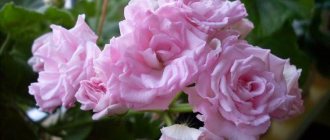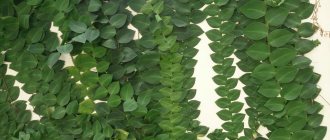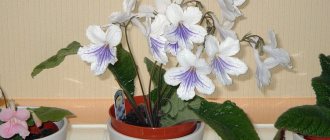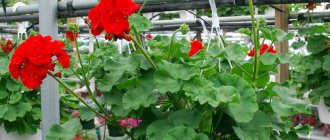Aucuba received the name of the golden tree for its bright yellow spots on the dark green background of the foliage. Because of its thick stem, the plant was called the sausage tree. If you translate the word "aokiba" from Japanese, you get "always green." And the flower really pleases its owners with lush foliage throughout the year. And also long and bright flowering.
This Japanese miracle is perfect for smokers, because it can stay in a smoky room. And it will even purify the air.
Home care
Aucuba will not require special attention to his person. But you still have to create conditions as close as possible to natural ones.
Location and lighting
The sausage tree does not particularly favor bright sunlight. In direct sunlight, the golden-green leaves may fade. But even in the shade the plant will feel bad and stop growing. So, if possible, choose western and eastern window sills. Only varieties with dark green leaf color can be kept away from the window without any problems.
Temperature
A hot climate is absolutely not suitable for aucuba. In summer, she prefers to stay at an air temperature of +18-20°C. In winter it should be even less: +10-14°C. If it is warmer, the flower will shed its leaves.
On late fine days, feel free to take the flowerpot outside. Just choose a place where there is not too much light and protect it from precipitation. During the autumn and winter months, the Japanese plant goes into hibernation and does not produce new leaves. So there is no point in worrying her too much.
Watering
Aucuba tolerates underfilling more easily than overfilling. So, arrange the next replenishment of moisture only when the top layer has time to dry. In hot weather, water the flower about once a week. In autumn and winter, twice a month will be enough.
Do not allow excess moisture in the pot, otherwise the leaves may darken.
Air humidity
As soon as the heating turns on, the golden tree will begin to suffer from dry air. Therefore, during this period, regularly irrigate and wipe the leaves with a damp cloth. If the room is not warm enough, do not overdo it. Otherwise, mold may spread. In spring and summer, the bush does not need moisture.
The soil
To plant aucuba, you need to prepare the soil mixture:
- 25% turf land;
- 25% coarse sand;
- 25% perlite;
- 25% wet peat.
You can safely replace the last component with humus. You need to pour the soil into a pot with drainage holes. Pre-line the bottom with a 3-5 cm layer of expanded clay for drainage.
Feeding and fertilizers
From March to the end of September, regularly feed the sausage tree with mineral fertilizer. Dissolve it in water to the consistency indicated on the package. You cannot add fertilizer to dry soil. Do this only when watering. Starting in October, allow the plant to rest until next spring.
If there are not enough minerals in the soil, the evergreen pet will begin to throw out small leaves.
Transfer
When you bring your aucuba home from the flower shop, immediately replant it in a new location. There is no need to shake off the roots from the substrate; roll them along with the earthen lump. Otherwise, the thin roots may be damaged. Water your new green friend only the next day after transplanting.
If you plant it in a large pot, then replanting will not be needed soon. In a small flowerpot the roots will be cramped and the bush will feel uncomfortable. For the first 5 years, improve the planting conditions for the plant every year. An adult aucuba will not require such actions. Replant as the roots grow.
Trimming
To form a beautiful crown, pinch the tops of the sausage tree annually. This needs to be done in March. And this procedure will have to be repeated every year. At the same time, remove excess shoots. They can be used to obtain new individuals.
Transfer
It is better to replant the plant in the spring. For young bushes, this procedure is carried out every 12 months, but for mature bushes, once every 2-3 years will be enough, as needed. You need to move the aucuba with great care so as not to damage the roots. It is more convenient to do this by transshipment, in which the earthen lump is preserved. The pot should be larger than the previous one, and always wide. Having completed the transplantation, the plant should be trimmed and pinched at the tops of the stems.
In the case when the aucuba grows to a large size, a full transplant can be replaced by updating the top layer of the substrate. As a rule, from 5 to 7 centimeters of soil must be replaced. In this case, the plant can live in the same pot for up to 10 years. By the way, the larger the pot, the larger the bush itself will grow. But in this case you will have to wait quite a bit - first the root system will fully develop, and then the growth of green mass will begin.
During transplantation, one must not forget about removing rotting or already dead roots. Having cut off the parts with a pre-processed tool, the cut area must be treated with crushed coal or chalk. Drying will require 2 to 3 hours spent outdoors.
Bloom
Even “in captivity,” aucuba from time to time rewards its owners with flowering. Bright yellow-green leaves go well with the red, fiery or red color of the apical inflorescences.
In order for fruits to appear, there must be representatives of male and female plants in the house. Once pollinated, the golden tree bears fruit. They are oblong and red. In appearance they resemble barberry.
General characteristics of a houseplant
The following description of the flower is most typical for the Aucuba houseplant:
- Evergreen shrub with lush foliage.
- On a powerful stem there are large leathery leaves with a rich green tint.
- The surface of each leaf is covered with golden inclusions.
- The flowering period lasts from March to the end of April.
The flowers have a red or brown tint, collected in panicles. After flowering ends, small red or orange berries form on the branches. The structural features of the varieties of this culture can be found in the photo of Aucuba.
Reproduction
Aucuba can be bred in two ways:
- cuttings;
- seeds.
Use any of them.
Cuttings
Last year's shoots obtained during March pruning are suitable for this method. Make sure that each of them has at least three leaves.
Plant the cuttings in a container with a peat mixture. Stretch plastic film over the top. The sprouts should take root at a temperature of +22°C. Once a week, remove the cover, let the pets ventilate and moisten the soil. When the roots appear, plant the plants in separate flowerpots.
Seeds
Place two pots with a male and female plant next to each other and perform artificial pollination during flowering. When the seeds appear, plant them fresh. After planting in moist peat, set up a mini-greenhouse by covering the container with transparent glass.
Be patient. Aucubes will germinate for a long time and slowly. Keep them warm by occasionally removing the glass, ventilating and watering the planting.
When 2-3 leaves appear on the sprouts, you can pick them. Don't be upset if young plants lose some of the varietal characteristics of their parents. This is quite possible.
Diseases and pests
Like any other plant, the Japanese flower can succumb to malicious attacks. They love to profit from juicy golden leaves:
- aphid;
- scale insect;
- spider mite;
- thrips
If you notice harmful insects, wash the affected bush with soapy water. The scale insect is not afraid of soap, so etch it with alcohol diluted with water. Carry out the treatment three times in a row with an interval of 3-4 days, using insecticides.
Organization of watering
An important issue in organizing care for such a crop at home is watering and moistening the flower. How to water a flower correctly:
The water used for humidification should be at room temperature and pre-settle for 24 hours.
The most frequent watering is in May and all summer months.
Each moistening of the soil is carried out only after the top layer of soil in the pot has dried. Excessive watering, especially in winter, will lead to darkening of the foliage and subsequent falling off. Root rotting due to stagnant moisture is also very destructive for this crop.
In the cold season, the flower must be sprayed regularly to maintain a normal level of air humidity. Water for treating foliage should be at room temperature to avoid the development of pathogenic fungi.
Care errors
Despite the fact that it is not capricious, aucuba can suffer from the wrong actions of a novice gardener:
- Yellowing of leaves and dried out tops. They talk about sunburn and the need to move the flowerpot a little further from the window.
- Blackening of leaves. Occurs in two radically opposite cases: excessive humidity or too dry air in the room. Normalize the regime of detention.
- Root rot. It begins to develop if the golden tree is watered too much or it freezes. Do not allow the thermometer to drop below +5°C. Otherwise, it will be almost impossible to save the flower.
- Shredding leaves. Occurs when there is a lack of minerals in the soil. You should urgently feed your evergreen ward.
- Falling leaves. May indicate irregular watering. Get this process going.
- Loss of yellow spots on leaves. This happens if the flowerpot is kept too far from the light. A similar loss of decorativeness can also occur due to a deficiency of nutrients in the soil.
- Slowing growth and thinning shoots. Aucuba needs urgent feeding.
Folk signs
The Japanese have long noticed that aucuba has magical properties. This amazing flower helps to improve family relationships. In a house where there is a flowerpot with an evergreen tree, everyone takes care of each other, treats each other with respect and love.
Even guests who find themselves in a warm, friendly atmosphere become more cheerful and kinder. And the negativity brought from outside is immediately blocked by the sausage tree.
Be sure to get yourself a golden bush. This will bring you happiness and wealth. And if the admirer behaves indecisively, not daring to propose, give him a flowerpot with aucuba. He will immediately gain courage, you will get married, and live happily ever after.
Medicinal properties
There was a time that in Japan it was not allowed to export this flower outside the country. After all, the golden tree not only looks beautiful, but has a lot of useful properties. Aucuba leaves can purify the air by destroying harmful bacteria.
In addition, they can be applied to burned, frostbitten, injured areas and hematomas. After keeping the compress for some time, it should be replaced with a fresh one.
Try to strictly follow the recipe, as an overdose can cause harm to the body instead of benefit.
Thermal and chemical wounds can be treated with aucuba fruit. Grind 50 g of fresh raw materials. Apply the resulting pulp onto cotton wool. Bandage it by applying it to the sore spot. The bandage should be changed 3-4 times a day.
Apply 4-5 leaves to the burn, grinding them in a mortar. Apply the paste onto a sterile bandage and apply to the sore spot. You will have to change it every hour.
Since everything about aucuba is poisonous - leaves, flowers and even berries - place the flowerpot as high as possible if there are kids in the house. So that inquisitive family members do not reach out to the golden beauty and cause trouble. Getting juice into the stomach will lead to bad consequences.
Also work with the plant very carefully. After pruning or replanting, wash your hands thoroughly with soap and water.
How to achieve a beautiful crown in Aucuba
If many shoots appear on the trunk in spring, the plant needs pruning. After it it will grow better. In order for the bush to have a beautiful, spreading crown, it is recommended to do pinching.
Replanting adult specimens to preserve decorativeness is not done often - once every two to three years. Young bushes - annually.
Aucuba has a fragile and brittle root system. Therefore, when transplanting, you need to be careful and carry it out using the transshipment method.
In order for the flower to grow intensively and maintain a beautiful appearance, the soil for planting is loose. It is recommended to use a mixture of two equal parts of peat, leaf peat, six turf soil and one sand.
When working with shrubs, it is important to remember about safety precautions: carry out all operations with gloves, do not forget to wash your hands, and avoid getting the juice on the mucous membranes.
Kinds
There are eight species of aucuba in total, not counting the many subspecies and varieties. Let's pay attention to the most beautiful representatives of the dogwood family that you can grow at home.
Aucuba japonica
It has smooth oval leaves that can reach 20 cm in length. Sometimes they are decorated with teeth at the end. With good care, this bush will stretch up to 2 m in indoor conditions. And when it blooms, it will delight those around it with bright red panicles.
You are unlikely to expect any fruits from your ward. But if they do appear, they will ripen on white, yellow or red berries. You can shape the crown at your own discretion. But the golden spots on the leaves are always equally located in all representatives of this species.
Aucuba Himalayan
It is found much less frequently among flower growers. This representative has sharp, thin and dark green leaves with seemingly cut edges. The shoots develop quite quickly, so the pet requires regular pruning. Golden spots on leaf blades can be either large or small. And some varieties do not have them at all.
Be sure to pay attention to this marvelous ornamental plant, which will delight you not only with beautiful bright flowers, but also with unusually colorful leaves with golden splashes.
A little history
Aucuba japonica is native to subtropical East Asian forests. It is a small evergreen tree. The varieties you most often find on sale are: Hillieri, Variegata, Goldiana, Crotonifolia, Dentata.
The flower began to be found in home interiors already in the 18th century. Previously, we had only heard about it from the stories of residents of the subtropical climate zone. Residents of Japan were especially lucky, where it was widespread. They could enjoy its unusual view around the clock. But other inhabitants of the planet were allowed to contemplate the beauty of the golden bush only by visiting the vast expanses of Japan. The indigenous population carefully protected the plant, believing in its magical healing properties. Export was under the strictest ban.
It was only in the 17th century that aucuba was brought to European countries. True, there was a problem with selection. The plant was female, and a male was required for pollination. The situation changed a few decades later thanks to the scientist and botanist from England Robert Fortune. He managed to get a male flower seedling.
Transportation of decorative wood was a rather complex and costly process. Therefore, the “golden tree” decorated the houses of only the wealthiest people. Gradually, the flower began to gain increasing popularity and distribution among the inhabitants of Europe. They not only learned how to properly care for it, but were also able to significantly increase the number of copies. In the future, everyone could please themselves with the acquisition of a golden tree.



